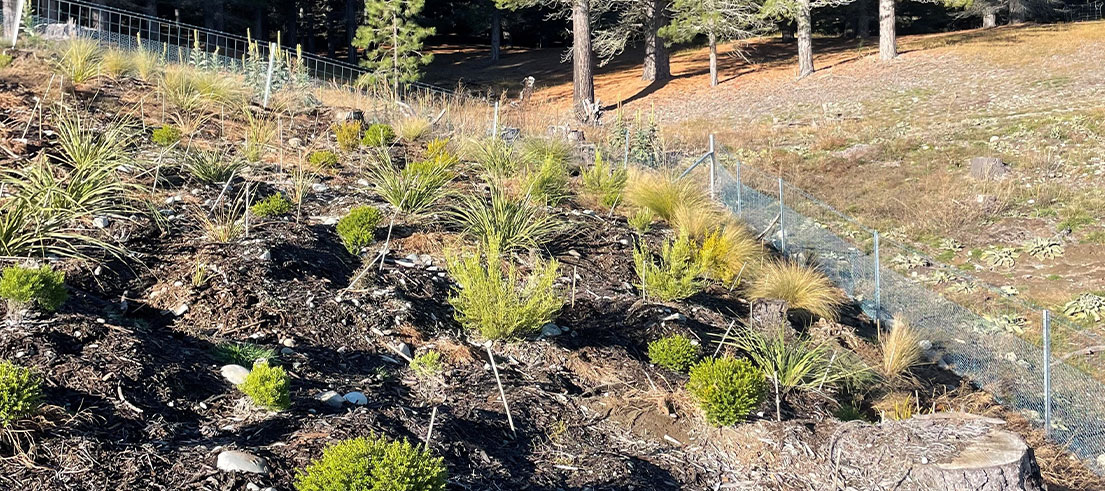
Native plant restoration flourishing at Takapō Regional Park
Takapō Regional Park’s new native plantings are not just surviving — they’re thriving, thanks to careful planning, local partnership, and dedicated care from our park staff.
Since September 2024, 12,000 native plants have been installed around the park as part of a long-term plan to replace pest tree species while retaining shade and access to the much-loved recreational area.
Native plants include:
- dwarf kōwhai
- koromiko
- tōtara
- toe toe
- taramea
- narrow-leaved snow tussock, blue tussock, and hard tussock.
The native trees and shrubs are thriving in difficult conditions because they are indigenous to the area and suitable for the conditions. They are also being tenderly cared for by parks and forest staff and specialist nursery staff.
“We’re extremely pleased to see these native plantings thriving. It’s a really positive result given the site’s exposure and challenging environmental conditions,’’ said regional biodiversity officer Brad Smith.
“They will be a defining feature of the park for years to come, enhancing habitat for native wildlife and complementing the fast-growing replacement trees that will provide shade, shelter, and improved soil stability.’’
Replacing pest trees over 20+ years
Almost all trees in the 162-hectare park are conifers, most of which are identified pest species in our Canterbury Regional Pest Management Plan. As kaitiaki (guardians), we’re responsible for removing pest species.
We’ve split the park into five sections and are removing one section of pest trees every five years over the next two and a half decades and replacing them with a mix of native and more suitable exotic species.
This staged approach will mean park visitors can continue to walk, mountain bike, go orienteering or have a picnic in a sheltered forest.
Partnership with mana whenua key to success
We created a plan to reintroduce native plants to the park in partnership with Te Rūnanga o Arowhenua, who are mana whenua for Takapō.
In the first phase, 12,000 native plants were supplied by Arowhenua Native Nursery and installed by their specialist restoration team, Te Kete Tipuranga O Huirapa Ltd.
Natives plants were spread across eight areas that are protected by fencing to keep out threats such as rabbits and wallabies.
Te Rūnanga o Arowhenua gifted the name ‘Te piripiri’, which means to stand together, for the groups of native plants.
“We at Arowhenua Native Nursery and Restoration are proud to have supported the restoration work following the removal of wilding pines from the Takapō Regional Park. This kaupapa is transforming the site by helping to bring the whenua back to life—re-establishing biodiversity, creating habitat for lizards, insects and manu (birds), and reconnecting people with this landscape’s original mauri,” said Arowhenua Native Nursery and Restoration general manager Felicity McMillan.
“Ngā mihi nui ki a koutou katoa who have contributed to this collective effort. Together, we are nurturing the return of native life to the Takapō landscape.”
What’s next for the replanting of Takapō Regional Park
The first stage of removing pest trees was completed in early 2023. This included the largest concentration of contorta pines in the park, which are species responsible for a big part of the wilding pines problem in the Mackenzie Basin.
30,000 non-invasive exotic trees were planted to replace those harvested.
The next harvest of pest trees is planned for 2028.
Using GPS tracking, we will identify and retain non-pest trees, as per feedback from the community.
The Lake Tekapo Regional Park Society is supporting ongoing improvement of the wider park with supplementary planting and enhancement works.
Find out more: Learn why wilding pines are a problem and the work we are doing to prevent their spread.


